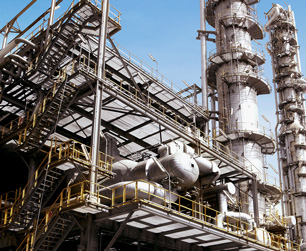Chlorobenzene (Monochlorobenzene)
| EPA Maximum Contaminant Level (MCL) |
0.1 mg/L |

Chlorobenzene (or monochlorobenzene) is an organic compound used in the manufacture of insecticides, dyes, degreasing agents, adhesives, drugs, rubber, paints and dry cleaning chemicals.
Human exposure to chlorobenzene is most likely to occur occupationally, through inhalation. However, it is mobile in the environment, and degrades slowly, making it a potential groundwater contaminant. According to the World Health Organization, it has been detected in wastewater, surface water, groundwater and drinking-water.
Health Effects of Chlorobenzene
Chlorobenzene is acutely toxic, affecting the central nervous system and impairing liver and kidney function. Workers exposed to chlorobenze have reported symptoms of headache, dizziness and sleepiness.
Long term exposure to chlorobenzene can cause liver, kidney and central nervous system damage.
Chlorobenzene is generally found in low concentrations in water and, due to a low taste and odor threshold, it can be readily detected in the large amounts reponsible for its adverse health effects.
Water Treatment for Chlorobenzene
The EPA recommends granular activated carbon (GAC) in combination with packed tower aeration (an air stripping method). Lenntech reports that activated carbon alone has a “very high probability” of adsorbing chlorobenzene.
Sources: EPA (1), EPA (2), WHO, Lenntech, Photo: WikiMedia, author: Secl
Site Index
Filtration Systems
- Aeration for Iron & Sulfide
- Backwashing Filters
(whole house & well units)
- Chlorine & Chemical Injectors
- Countertop Water Filters
- Garden Hose Filters
- Reverse Osmosis, Residential
- Reverse Osmosis, Commercial
- Shower Filters
- Specialty Filters
- Ultraviolet Systems
- Undersink Filters
- Water Softeners
- Whole House Filters
Cartridges
Parts
- Replacement Parts
- Faucets
- Filter Media
- Fittings
- Housings
- O-rings
- Pumps
- Pura UV
- R.O. Parts
- R.O. Tanks
- R.O. Booster Pump
- VIQUA UV